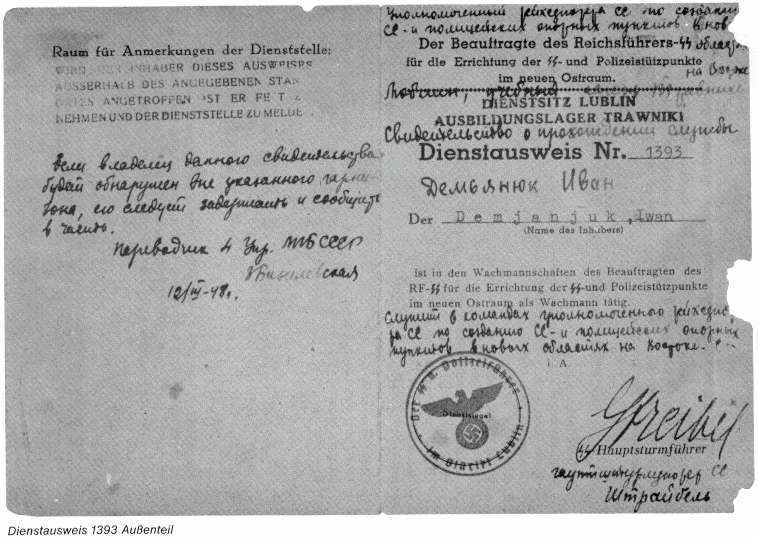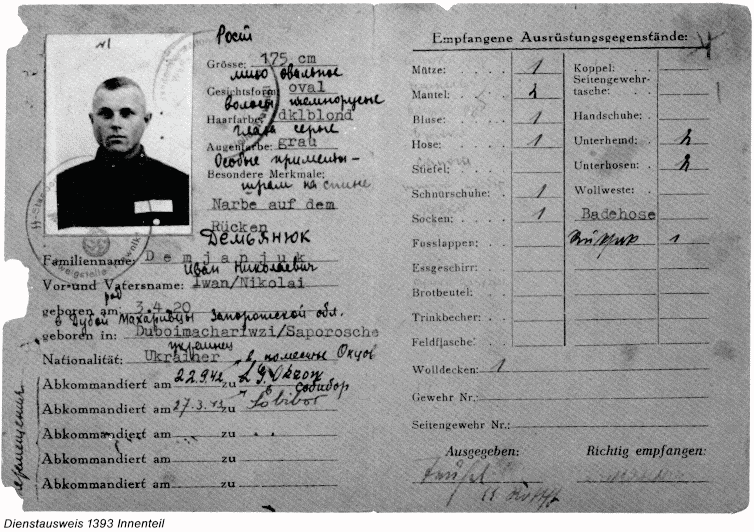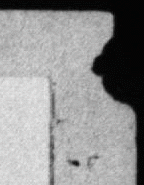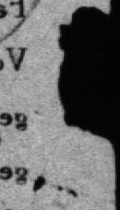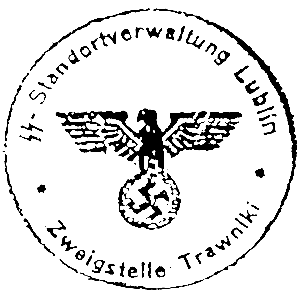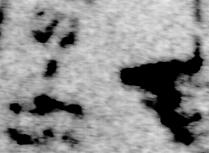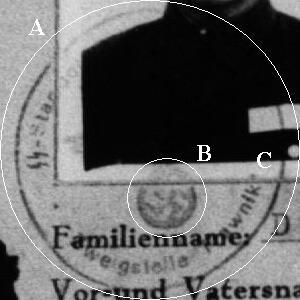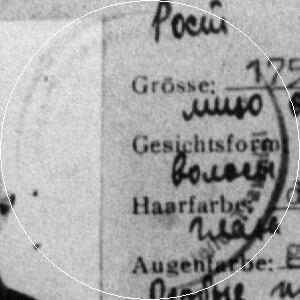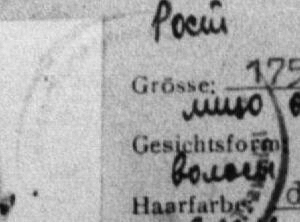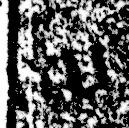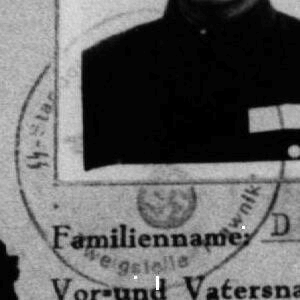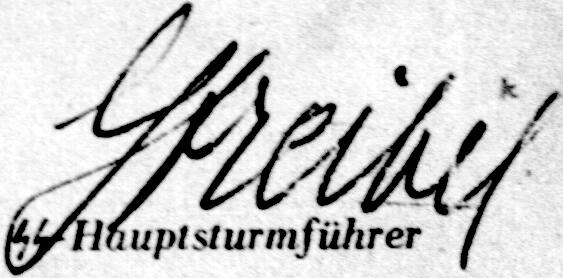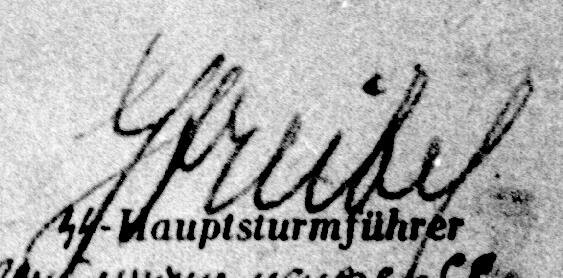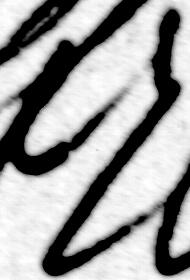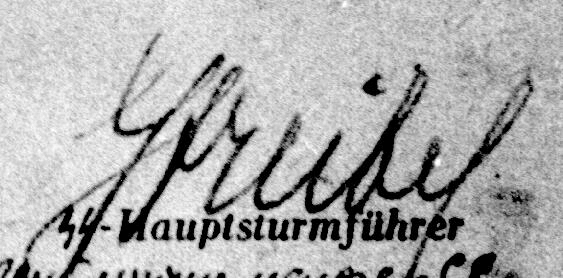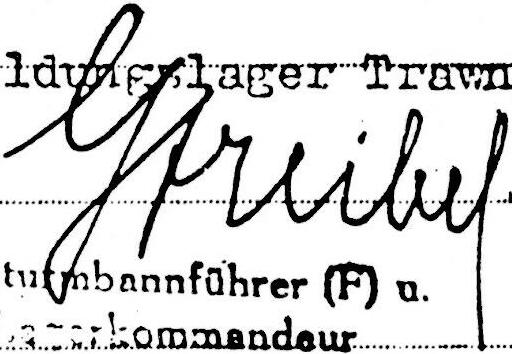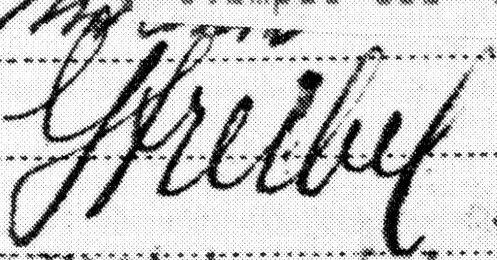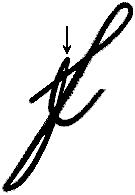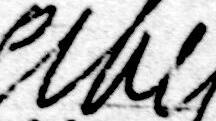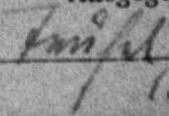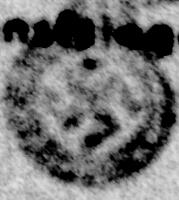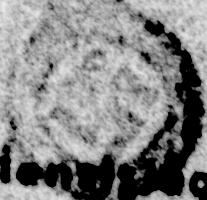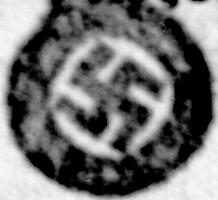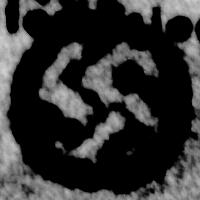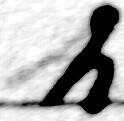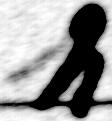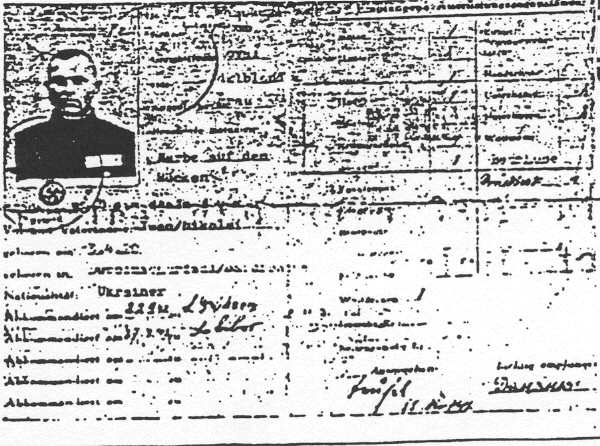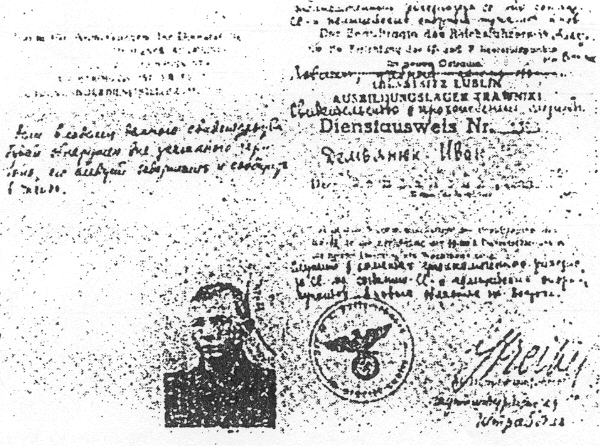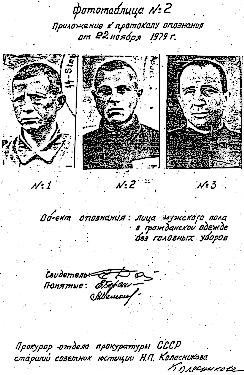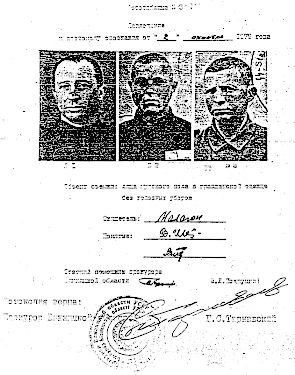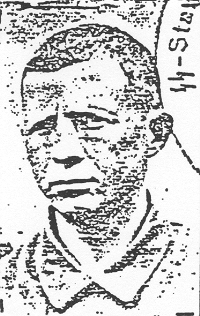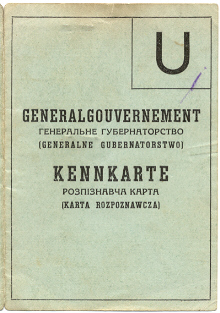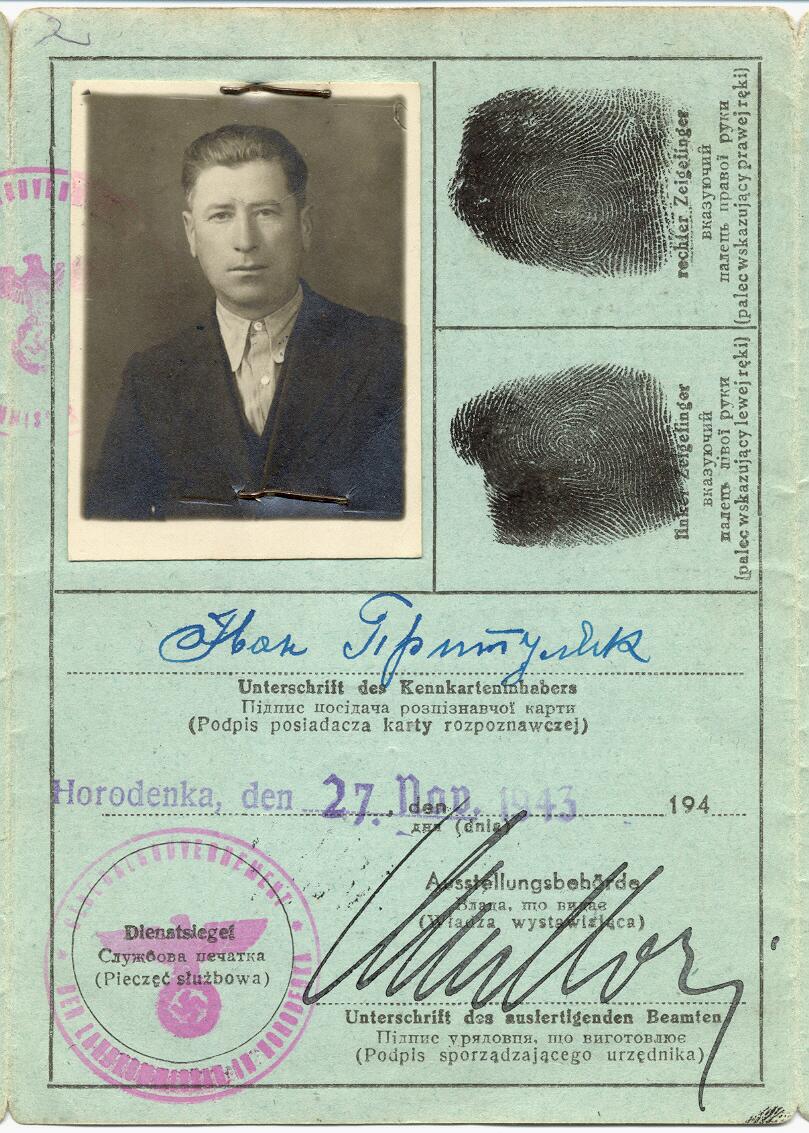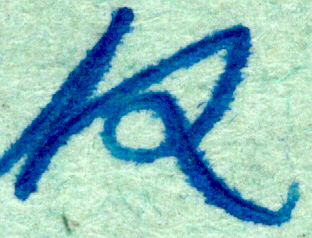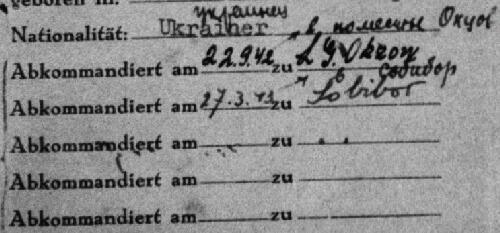[...]
According to experts of the Bundeskriminalamt (BKA) in Wiesbaden, the only piece of evidence in writing in this trial, an "SS-Dienstausweis" is a forgery. And what is even worse, this was known to the Israeli authorities even before the trial began in February, 1987.
For quite a long time now there have been doubts whether or not Demjanjuk, who emigrated to the United States in 1952 and who was extradited to Israel in 1986 was really "Ivan the Terrible", and whether or not the SS-Dienstausweis is authentic (STERN, Nr. 1/1992: "Iwan der Falsche" � Ivan the Wrong One). But now the Israelis are obviously trying to back up a death sentence against their better knowledge, on the basis of a piece of evidence recognized by the German Federal Office of Criminal Investigation as a forgery.
In January 1987, a Brigadier-General of the Israeli Embassy in Bonn by the name of Yagel contacted the BKA and requested them to examine an "SS-Dienstausweis Nr. 1393" using the methods of criminalistics, since this would put "substantially more weight" on an expert's opinion of their own. The document had been played into the Israelis' hands from Soviet sources several weeks prior to this.
On 25 January 1987, the head of the document laboratory in Jerusalem, Police Major Bezaleli, called at the Wiesbaden BKA and handed the alleged SS ID-card Demjanjuk's to them.
The BKA experts told their Jerusalem colleague that, at first sight, the document contained "a series of distinctive features which do not necessarily speak in favor of the document's authenticity", as BKA head of department Dr. Louis-Ferdinand Werner noted in a memo to be included in file. For:
- The ID-card has not, as customary, a date of issue.
- The rank of the issuing officer (SS-Hauptsturmführer � Captain Streibel) is printed in and not entered by hand or using a typewriter, as was customary because ranks would change quickly.
- On the photograph, as can be easily seen from the interface at the base of the neck, the head was subsequently copied in. Furthermore, two different kinds of glue were discovered on the reverse of the photograph, which means that the picture had been removed from another piece of paper and then pasted into the "Ausweis" using a different kind of glue.
- Different, in those days certainly unusual, printing and stamping types were used for the ID-card. Also, the "Memphis" size of type of the original printing has only been modelled.
- The SS-runes shown on the ID-card are hand-drawings, on the basis of which a printer's copy was made.
From this point of departure, the BKA-experts said in 1987, it would take them two weeks to meticulously examine the presumably false ID-card.
Thereupon Major Bezaleli telephoned with Israel and subsequently informed his colleagues in Wiesbaden that "further examinations are no longer desired", and he would do the job himself.
The BKA head of department then took down in his memo: "Die fachlichen Bedenken sollten hier offensichtlich den politischen Aspekten untergeordnot werden" (In this case, the experts' doubts are obviously to be subordinated to political aspects). He had the impression that "finding out the true facts of the case does not really matter here", an assessment corroborated by the handwriting expert mandated by the Defense, Dieter Lehner.
Undeterred by these events, Major Bezaleli subsequently proceeded, accompanied by BKA colleagues, to the Federal Archives in Koblenz and other places, to look for any material substantiating the authenticity of the document � likewise unsuccessful.
He searched for a comparable SS-Ausweis � in vain, for there is not one single specimen in Germany. There are, however, some of them in the Soviet Union, for the Soviet Director of Public Prosecutions sent four additional specimens to Jerusalem, when, in the course of the Jerusalem trial, the authenticity of this piece of evidence was challenged by the defense attorneys.
Also the signatures on this "Dienstausweis" have obviously been counterfeited: The former SS-Hauptsturmführer Karl Streibel, who allegedly signed the ID-card, as well as Rudolf Reiss, the former pay-sergeant of the SS-training camp Trawniki, where according to the ID-card Demjanjuk served in 1942, emphatically denied in sworn statements in the presence of German detectives ever having signed, handed out or even having seen such a document.
In spite of all this, the Jerusalem District Court had "not the shadow of a doubt", when on 18 April 1988, after 106 hearings, they passed the death sentence against Demjanjuk � the hitherto second verdict for Nazi crimes after Adolf Eichmann, who was hanged in 1962.
Said Judge Zwi Tal in his reasons for the judgment: "The convicted person did not organize the extermination of millions of people, like Eichmann, but he was a major henchman who murdered and maltreated people with great pleasure".
In their judgment, the court "first and foremost based themselves on the testimonies of witnesses"; then on the SS ID-card, "the wrong alibi and other lies of the accused"; and on the Berlin expert on contemporary history, Professor Wolfgang Scheffler, who considered the document authentic, adding the remarkable argument that "anyone who would like to falsify such a "Dienstausweis" would have to be an absolute expert". Scheffler now to STERN: "I cannot say anything about criminalistics. But for reasons of content, I continue to stick to the authenticity of the ID-Card".
The Israeli judges were looking for further circumstantial evidence in the statement of the BKA expert Reinhardt Altmann. As early as December 1986, even before Major Bezaleli arrived in Wiesbaden, Altmann had compared the glued-in photograph with genuine pictures of Demjanjuk and then testified before the Jerusalem court as an expert: "The person shown on the photograph is 'with very high probability' Ivan John Demjanjuk" � i.e. the accused".
But the judges' conclusion � photograph authentic, therefore ID-card authentic, too � is obviously false. Altmann's colleagues, who could have proved this at the time, were not required as expert witnesses. When a friend of Demjanjuk's wrote to the Federal Chancellery and asked them for further BKA findings, they informed him on 13 August 1987 that the BKA expert (Altmann) was heard "only concerning the authenticity of the photograph on the ID-card (which he confirmed), but not on the authenticity of the ID-card".
The Federal Office of Criminal Investigation refused to comment on the question why they did not raise their voice against this patent false judgment. They passed the "hot potato" on to Bonn. But there, too, no comment was to be had by Monday.
[...]
STERN, November 1992, found bound in a book of trial exhibits. The translator appears not be a native speaker of English.
|
